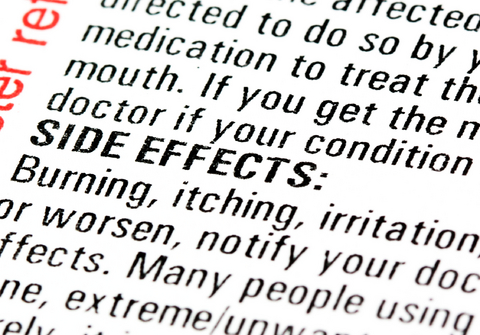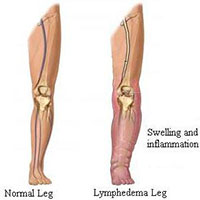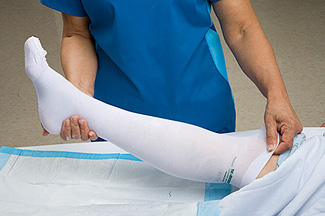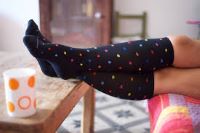Traveling, working, standing, or sitting for long hours can really do a number on your body, especially in causing some considerable damage to your legs.
Your lower extremities may just experience mild tiredness at first; however, then your legs or feet might to feel numb, sore, or tingly. Then maybe they’ll try to let you know of a more serious problem because you start experiencing pain.
The biggest indicator to know if your legs need some kind of special treatment or medical attention is to analyze how these issues are affecting your every day quality of life. For example, if your daily routine causes the same kind of exertion for weeks or months at a time to the point where you’re popping pain relievers constantly to give you temporary relief, then that’s not good. Your body will become immune to the painkillers, which may exacerbate other issues going on in your system.
On the other hand, looking into some other useful options like wearing compression socks is one of the best noninvasive ways to relieve leg pain. The pressure that compression socks provide helps blood circulate more normally, in turn helping to relieve pain and fatigue in the lower portion of your body. Hence, wearing hosiery for a whole day starting from early morning until bedtime can be hugely beneficial- to a point. Because having compression socks on too long can also cause irregular blood flow leading to mild to severe health problems. Therefore, if you’re a fan of wearing compression socks or hosiery regularly, you may be wondering…
Is it okay to wear compression stockings/socks all day?
The primary purpose of compression socks is to regulate abnormal blood flow and they cannot solely treat conditions such as leg pain, fatigue, swelling, lymphedema, varicose or spider veins. By using compression socks to boost blood circulation, you can provide relief to all of those other related medical conditions.
This is due to the fact that if you use them to treat your leg/feet issues, then you’re also helping the blood to flow in the right direction to reach your heart so that it can continue to circulate correctly through the rest of your body. The point of this process is to diminish pain in legs, thighs, or foot and reduce swelling or the appearance of tangled veins.
Using compression hosiery all day means two things:
- The circulation of your blood will flow naturally and undisturbed from morning ’til night.
- You can carry out small/big tasks without worrying about pain in your legs.
Many doctors also suggest using compression socks from the time you get up until the time you go to sleep to ease the pain in your lower legs for the entire day. Some people wear them for a short time like while walking or running, but they can be worn all day just like hosiery.
What happens when you wear them while sleeping?
To understand this innovative non-evasive yet effective medical treatment, let’s get down to the facts on how compression socks work. Here are some main points about compression socks:
- They are made of material that applies constant pressure.
- They help the blood flow from the legs back to the heart, which makes the body perform better.
- While a person wears them, the applied pressure allows the blood to flow in a regular motion.
- While the blood circulation becomes normal, compression socks help relax the otherwise disturbed veins and arteries.
Since the blood does not need much of gravitational force to flow back to the heart while you’re lying down, you don’t need to wear them why you are sleeping. Therefore, if you wear compression socks to bed, then the compression may cause some adverse effects because the additional force might heighten your blood pressure to an unsafe state.
This is the reason why many medical experts do not suggest wearing them while sleeping.
Popular Articles on ComproGear
What Level of Compression Socks Do I Need? What Does mmHg Mean in Compression Socks?
So Should I Wear Compression Socks or Not?

Compression hosiery is one of the best and most harmless treatments for pain, edema, tangled veins, and other problems related to irregular blood flow because stockings provide such a mild pressure that it can’t cause any harm. This is why anyone can buy compression socks or hosiery over the counter without a doctor’s prescription, but only if the compression level is mild enough to be completely safe.
A lot of the people have this misconception that using socks all the time makes your body accustomed to regulating that blood flow unnaturally, that it would otherwise slow down the blood flow without that constantly applied pressure. But that’s not true. A compression sock treatment is entirely non-medicated and does not cause any sort of harm unless the patient suffers from conditions like high blood pressure or peripheral vascular disease.
Again, how do compression socks help?
Compression socks are for everyone, from a person who daily struggles with mild pain in the lower legs to someone who suffers from a severe medical condition like lymphedema. The primary use of them is to provide immediate relief from pain and discomfort that is caused from physical (and mental) fatigue and excess stress.
There are many situations/functions of the body that compression socks can help with, including:
- Tiredness:
If someone feels exhausted after a hard day at work or doing extensive house chores, then using them from morning ’til night is the best way to prevent fatigue and keep your body’s blood circulating at a normal level.
- Edema:
Edema is a condition in which there is excess fluid in the leg tissues causing severe swelling. It only gets better after some time of wearing compression socks when you start to notice little to no swelling.
- Lymphedema:

Lymph is a fluid that flows in our lymphatic system. Hence, if lymph unnaturally gathers in leg tissues, then it causes a condition known as lymphedema. Fortunately, compression socks work wonders in treating this kind of swelling and inflammation.
- Varicose/spider veins:
Varicose/spider veins are another name for tangled veins that occur while the blood is unable to flow in the right direction and motion. Like the name implies, as the blood struggles to flow towards the heart from the leg, the arteries and veins become messy.
- Deep vein thrombosis:
Most of the veins deep in a human body are in lower leg or thighs. Deep vein thrombosis (DVT) is a severe medical condition in which a blood clot forms in one of the deep veins causing some chronic pain and other health problems related to irregular blood circulation.
- Pulmonary embolism:
If a blood clot blocks one of the major arteries in a lung, then it is known as pulmonary embolism. It happens while the blood clot travels from the lower leg to the heart and gets stuck in the lung.
Tips and Tricks for Wearing Compression Socks
If you’re wearing compression socks for long hours at a time and do not take them off in between, then here are some useful tips and additional facts to making it all work to get your desired results:
- Compression hosiery comes in all forms so make sure to buy the type that suits your daily requirements the best. For example, thigh-high is best for athletes, whereas women are usually comfortable in pantyhose. Stockings are made for everyone from people who have a desk job to people who stand or walk a lot during the day.
- It is better to consult with a doctor to know which level of compression suits your condition. However, if it is something as familiar or mild as dull leg pain, discomfort, or slight swelling, then it is okay to use 8-15 mmHg.
Wearing Compression Socks After Surgery

Wearing compression socks after surgery is ideal when:
- The surgery involves giving the patient general anesthesia.
- The surgeon operates on legs, hips, or thighs.
- The doctor instructs the patient not to move and to rest as much as possible.
Since anesthesia is commonly given for surgeries yet causes swelling and pain after it wears off, compression socks can provide some much needed relief. Compression socks can help also keep the blood flowing while the patient is laid up and maybe can’t move around naturally for a period of time.
Wearing Compression Socks After a Workout
Running is a lifestyle that many people love to do regularly, as well as other types of endurance training. But one often has to go out of their way to get exercise, it’s not a natural activity for most people. And if a person decides to condition their body with an abundance of exercise, they end up putting their body through a unique type of stress. Fortunately, this a good kind of stress that is beneficial to maintaining overall health and wellness in the long run.

There is no doubt, however, that long-distance running and intense training can take a toll on certain parts of the body, like the lower legs. Pain and body transformation is a facet of becoming a better athlete but there are ways to make that conversion into a premier athlete a little easier. Wearing compression socks while running is one of the ways to best protect your joints.
Many runners don’t know how long they should wear their compression socks for while training and how that fits with other specialized articles of clothing. Many people wonder, if compression helps to protect active legs, can’t that protection last beyond workout sessions?
The answer is yes.
High compression gear used for running can make the activity more comfortable because:
- Using proper compression doesn’t cause muscle fatigue.
- They act as restriction bands that help remain physically and mentally fit.
- The special construction and materials used to create compression gear has comfortableness and versatility in mind.
Training gear with compression built into it is different from medical compression gear because of the type of material blended together. A combination of nylon and spandex fibers are often used to make sports gear. That type of mixture is great in that it retains its strength and durability regardless of how powerful the stretch is. Sports gear also keeps its original form after being worn many times. However, medical compression gear is much less forgiving and it requires regular replacement.
If you’re a running athlete who uses compression socks regularly, do you ever ask yourself, “How long should I be wearing them?” You might be surprised to learn that it is longer than you think.
The best compression socks optimize blood circulation during workouts. And although the idea is to prevent negative blood pooling, it does not help achieve positive results if they have overly tight restrictions. Socks with a medium value, a proper material blend, and a good fit are best to wear after finishing a run.
The right way to wear compression socks:
If you’re feeling uncomfortable while using compression hosiery, then it is probably because something is not going right. While there is no “right” or “wrong” way to wear them, there are some factors that could be counterproductive in not getting the results you are looking for. Compression socks won’t work if:
- The size isn’t right for your calf or thigh (it feels either too tight or too loose).
- The material of it is not ideal for your skin type and it causes an allergic reaction.
- Your feet and legs sweat a lot while using them.
- The swelling does not stop.
- They are hard to put on.
Therefore, if you’re not getting satisfactory results after using them then make sure to look into the above factors to try to pinpoint the issue causing it.
Advantages and disadvantages of wearing compression socks:
In a nutshell, here are the advantages:
- It prevents blood clots from forming.
- Compression socks relieve pain.
- They regulate your blood circulation.
- They can be beneficial in preventing heart failure.
- They decrease swelling in your legs or feet.
But there are some disadvantages, too, such as:
- Wearing them can cause mild itching.
- If they’re the wrong size then they’ll be uncomfortable.
Do they increase blood pressure?

This is a concern that people often have when interested in trying compression socks, but no, they are not responsible for increasing blood pressure. Their primary function is to give relief to the arteries and veins that struggle with allowing blood to flow freely back to the heart. If a patient experiences high blood pressure after wearing socks, then it is probably because your body does not need that level of compression and may require some other kind of medical attention.
